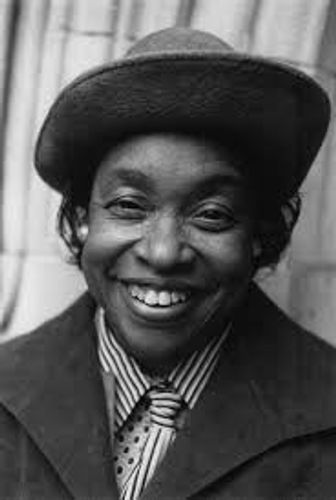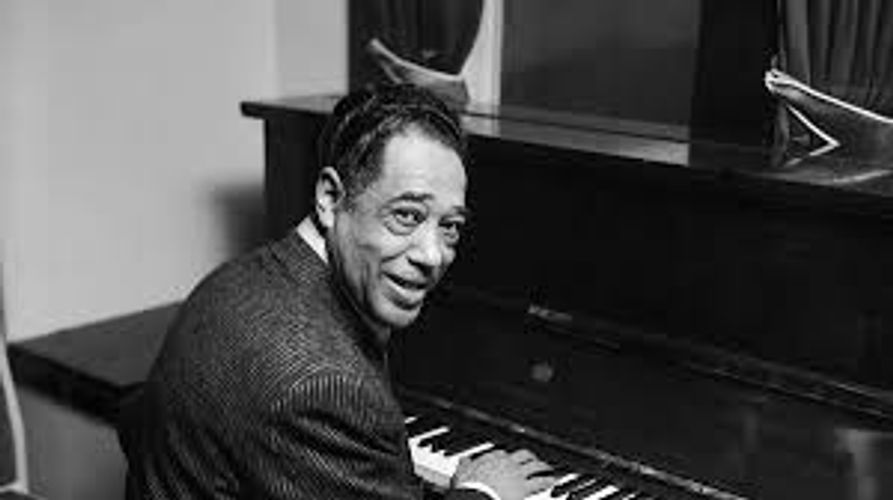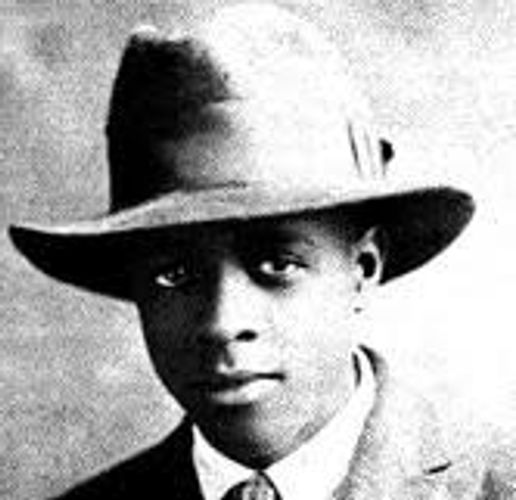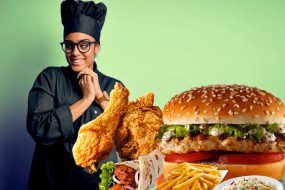Harlem Renaissance Free

Harlem Renaissance
Who was the bass baritone concert artist, stage and film actor also known for his political activism?
Paul Robeson

Paul Robeson was a star athlete and scholar at Rutgers; he was also a bass baritone vocalist and a stage and film actor who later was known, and even blackballed, for his political activism and association with the Communist Party.
What was the name of the first Black organization and its publication created during the Harlem Renaissance by Hubert Harrison?
The Liberty League; The Voice

Hubert Harrison, considered the Father of Harlem Radicalism, first formed the Black-led multiracial party, the Colored Socialist Club then later the Liberty League of Negro Americans, the first Black organization of the Harlem Renaissance. He also created the first political newspaper of the era, "The Voice".
Which of the titles was not written by Langston Hughes, often called the “poet laureate” of Harlem?
"Invisible Man"

The novel, "Invisible Man", was written by Ralph Ellison and was not published until 1952.
In 1923 who became the first playwright to have a non-musical play produced on Broadway?
Willis Richardson

Willis Richardson’s "The Chip Woman’s Fortune", a one-act play, was the first non-musical play produced on Broadway.
Which two Black artists earned top awards at the first annual art exhibition held in Harlem for African American artwork, held by the Harmon Foundation?
Palmer Hayden and Hale Woodruff

Hale Woodruff, African-American artist known for his murals, paintings, and prints and Palmer Hayden, known for his narrative scenes of New York's urban life and the rural South, were the first recipients of the William E. Harmon Foundation award for Distinguished Achievement among Negroes for fine arts.
Who was the daughter of the first African American woman millionaire who served as a patron of many artists of the Harlem Renaissance and entertained them regularly in her elegant home?
A'Lelia Walker, daughter of Madam C. J. Walker

A’Lelia Walker, born Lelia McWilliams, was the daughter of Madam C.J. Walker who earned her millions through hair dressing and hair creams for Black women. A’Lelia served as president of her mother’s business and amassed great wealth of her own. She used much of her funds to support the work of artists of the Harlem Renaissance.
Who is often identified as the “father of the Harlem Renaissance”?
Alain Locke

Alain Locke was a Harvard Graduate and the first African American Rhodes Scholar. He earned his reputation during the Harlem Renaissance with his writings in 1925 on the socio cultural movement of the Harlem Renaissance, which he later expanded to a compilation of writings by writers of the period. He called this collection The New Negro, which soon became a landmark publication for the further building of the Harlem Renaissance.
"If We Must Die", is a poem said to have initiated the Harlem Renaissance and since then has been a rallying cry for various political movements into the 21st Century. Who is the author of this iconic poem?
Claude McKay

Born Festus Claudius McKay, Claude McKay was a Jamaican writer who moved to the U.S. in 1912 to attend Tuskeegee Institute which he left in 1914 for New York. There he became one of the most important poets of the Harlem Renaissance.
Which was not a novel written by a woman during the Harlem Renaissance?
Margaret Walker’s "Jubilee"

Margaret Walker’s "Jubilee", published in 1966, is a historical novel which focuses on the life of a biracial slave during the American Civil War. It is set in Georgia and later in various parts of Alabama in the mid-19th century before, during, and after the Civil War. It was not a part of the Harlem Renaissance.
What event is said to have served as the beginning of the end of the Harlem Renaissance?
World War II

The economic crash of 1929, which initiated the Great Depression, ultimately ended the artistic surge of the Harlem Renaissance.
Who is the author of "Their Eyes Were Watching God" and three other novels and was initially a good friend of and collaborator with Langston Hughes?
Zora Neale Hurston

Zora Neale Hurston was the author of four novels and was a trained anthropologist and filmmaker. She also published research on Haitian Vodou and, with Langston Hughes, published with a play titled, "Mule Bone: A Comedy of Negro Life".
What dates are generally considered to be those of the Harlem Renaissance?
1919-1929

1919-1929 is considered to be the boom years of the Harlem Renaissance, starting with the publication of Claude McKay’s post World War I poem, if We Must Die in 1919 and essentially ending with the stock market crash of 1929.
Who was the African American composer, pianist and leader of a jazz orchestra who popularized The Cotton Club in Harlem and made a hit of his song "Creole Love Call"?
Duke Ellington

Edward Kennedy “Duke” Ellington created a world-wide hit with the song "Creole Love Call", recorded with Adelaide Hall in 1927.
What poet's first poem, "The Negro Speaks of Rivers", was published in 1921 in "The Crisis", (the official magazine of the NAACP) and became what many consider to be his signature poem?
Langston Hughes

Though known primarily for his poetry, John Mercer Langston Hughes was also a novelist, playwright, social activist, and newspaper columnist who served as one of the leaders of the Harlem Renaissance.
Who was the writer who wrote the critically acclaimed novel, "Cane", about race in America, but who preferred to be seen simply as an American writer rather than an African American writer?
Jean Toomer

Jean Toomer’s Cane, called a novel, but actually more a multi-genre collage, was published in 1923 and was an American masterpiece by many critics.
Marcus Garvey was leader of what organization that had more members world-wide than any Black organization during the period?
Universal Negro Improvement Association

The Universal Negro Improvement Association, led by Marcus Mosiah Garvey was a Black nationalist organization designed to uplift the Black race across the world. By 1920, it had nearly 2,000 divisions in over 40 countries, as well as a Black paramilitary group, Black businesses, and a Black nurses corp. Its slogan was Africa for Africans: At Home and Abroad.
Which American--born French entertainer was initially named Freda J. McDonald from St. Louis, Missouri?
Josephine Baker

Josephine Baker was born Freda Josephine McDonald and after she moved to France, became one of the most popular entertainers of the period. She was also a French Resistance agent, and civil rights activist.
What Blues singer was NOT a part of the Harlem Renaissance?
Billie Holiday

Billie Holiday, born Eleanora Fagan, was a blues singer, but sang from the mid 1930s to the late 1950s. She was also known as “Lady Day”.
Which of the following women was NOT a writer during the Harlem Renaissance?
Alice Walker

Alice Walker is an American novelist, short story writer, poet, and social activist who earned a Pulitzer Prize in 1982 and continues to write well into the 21st century.
The hub of cultural and artistic activity during the Harlem Renaissance was located where?
New York

Although the spirit of the Harlem Renaissance was felt in much of the country and in many cultural centers of the world, the center of activity of the artistic and cultural movement was in Harlem, New York.
Whose daughter did poet Countee Cullen marry in 1928 in one of the largest weddings of the Harlem Renaissance?
W.E.B DuBois

In April, 1928, Countee Cullen married Yolande DuBois, daughter of social reformer, W.E.B. DuBois in a huge wedding; however, by summer, the marriage had dissolved.
James Weldon Johnson, civil rights activist, writer, composer, politician, educator lawyer, and leading figure of the Harlem Renaissance created the lyrics to what well known song?
"Lift Every Voice and Sing"

The lyrics of "Lift Every Voice and Sing" were written by James Weldon Johnson and the music by his brother Rosamond Johnson to celebrate Abraham Lincoln’s birthday in 1900 well before Johnson moved to Harlem to become an active part of the Harlem Renaissance.
What was the title of the play that opened in NYC in 1929 and was considered the first successful play by an African American playwright?
"Harlem"

"Harlem", by essayist, novelist and playwright, Wallace Thurman, was called by critics the most successful play of the Harlem Renaissance.
Who published “The Negro-Art Hokum”, a scathing criticism of the world renowned Harlem Renaissance?
George Schuyler

In 1926, George Schuyler, the chief editorial writer for The Pittsburgh Courier, criticized the Harlem Renaissance, declaring that race had nothing to do with the artistic expressions and there was no such thing as “black art”.
Which Black organization was primarily responsible for Congress passing anti-lynching legislation in 1922?
National Association for the Advancement of Colored People

The National Association for the Advancement of Colored People (NAACP) fought incessantly for over fifteen years to secure the passage of anti-lynching legislation.
How much do you know about the Black cultural and intellectual revolution of New York during 1920s and 30s? Learn here about its impact on the arts and politics of the rest of the country.
Related Posts
Login
Upgrade your Membership
This Quizz Only For Paid Members
Upgrade Your Account First




